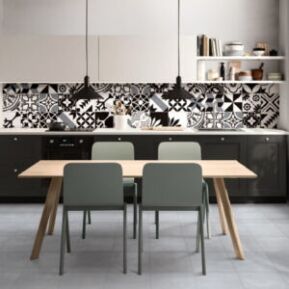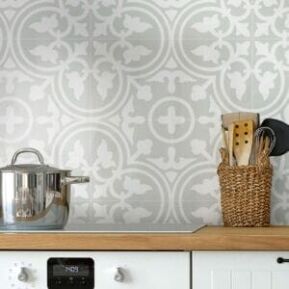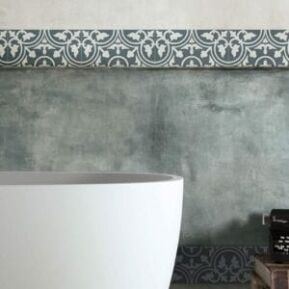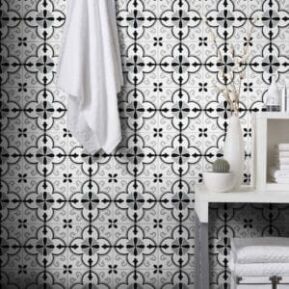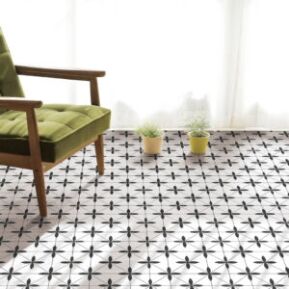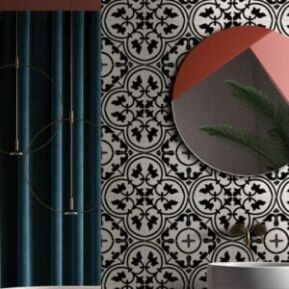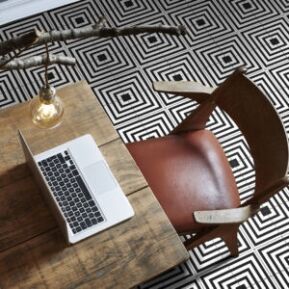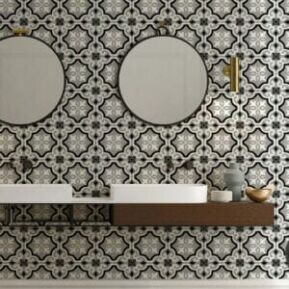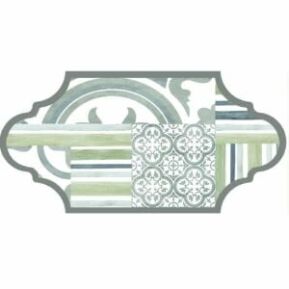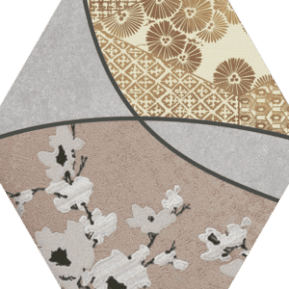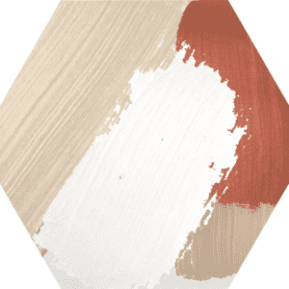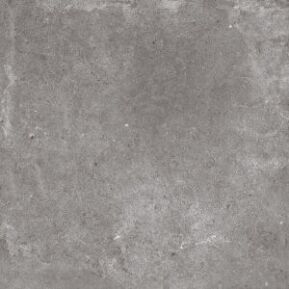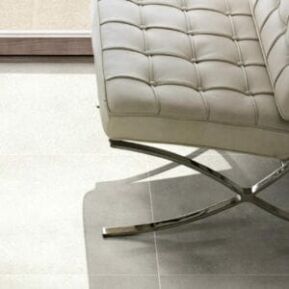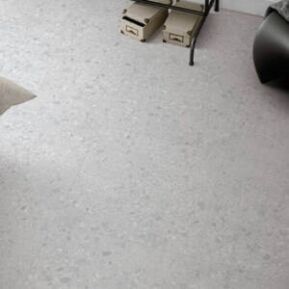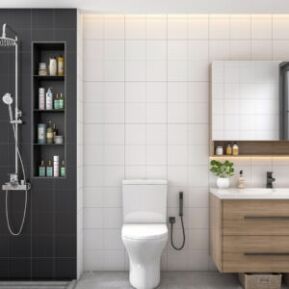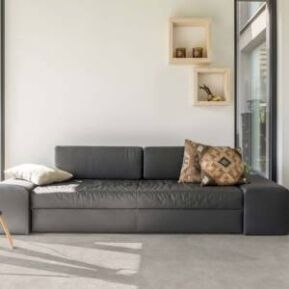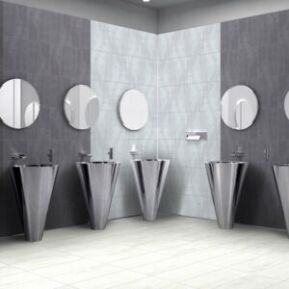How to Choose the Perfect Feature Wall Tile
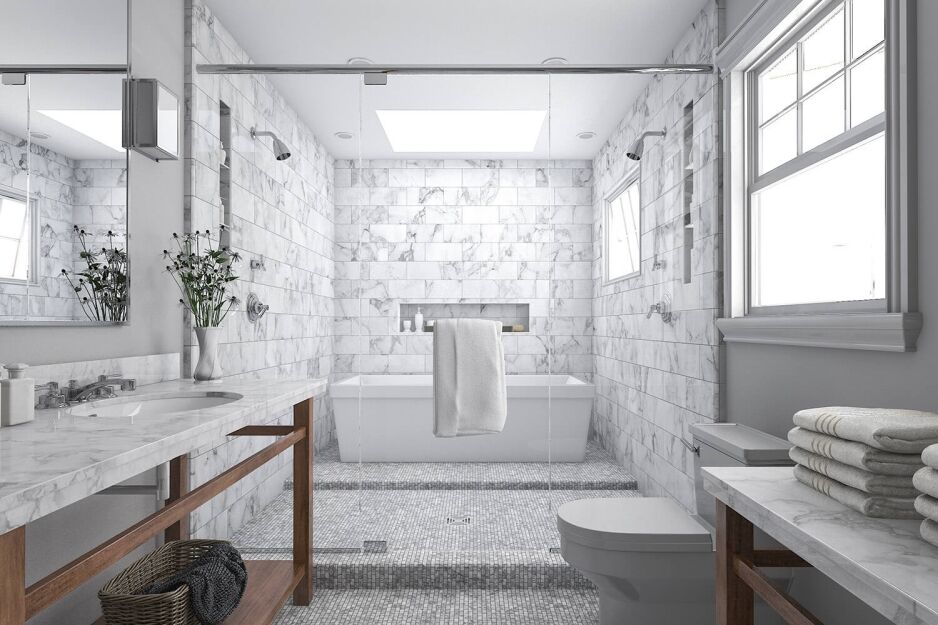
At Ross’s Discount Home Centre, we know that selecting the perfect feature wall tile is crucial for transforming your kitchen or bathroom into a space that truly shines. With our wealth of experience, we’re here to guide you in choosing tiles that perfectly balance style and functionality.
Whether you’re captivated by the timeless elegance of subway tiles or the bold allure of modern patterns, our expert insights will help you navigate the essentials—style, colour, size, and finish. Trust us to help you create a feature wall that’s not just a backdrop but a standout element in your home.
Dive in and discover how easy it is to achieve your dream kitchen or bathroom feature wall with our trusted expertise and extensive selection.
Key Takeaways
- When choosing feature wall tiles, it’s important to first decide on the overall design style of the space, such as Hamptons, contemporary, or industrial.
- The colour palette is a critical decision, with neutral tones offering timeless appeal, while bold colours can create a striking visual impact.
- Tile size and shape play a role in spatial perception, with larger tiles making small rooms feel bigger and smaller tiles enhancing visual interest in compact areas.
- Consider the finish and edging of the tiles; smooth tiles like gloss are easier to clean, while textured tiles may require more maintenance.
- Different tile designs complement specific design styles, such as subway tiles for Hamptons or concrete-look tiles for industrial designs.
- The balance between aesthetics and practicality is crucial, as feature tiles should enhance both the visual appeal and functionality of kitchens and bathrooms
.
Consider Your Style
When selecting a feature wall tile for a bathroom or kitchen, it’s crucial to focus less on the tile itself and more on the space it will occupy. In order to choose the perfect feature wall tile, you need to know what design style you want to achieve.
There are many design styles to consider, and there is no right or wrong choice here. It’s purely personal taste. According to Provincial Home Living, the most popular design styles include coastal, modern farmhouse, shabby chic, Scandinavian, art deco, and eclectic styles.
Once you have decided on a design style, you can then base your tile choice on this style. We discuss this further in the Tile Design section of this article.
Choose a Colour Palette
Selecting the right feature wall tile colour is one of the most critical steps in creating a cohesive design. Colours do more than just complement your style—they set the mood and evoke specific feelings. For instance:
- White Feature Tiles: A timeless choice, white evokes cleanliness, brightness, and simplicity. Perfect for smaller bathrooms or kitchens, they make spaces feel larger and more open. White also pairs well with nearly any style, from minimalist to Hamptons-inspired designs.
- Black Feature Tiles: Black is bold and dramatic, adding a sense of luxury and sophistication to your space. They’re ideal for contemporary or industrial aesthetics and create striking contrasts when paired with lighter colours. Balance their intensity with good lighting and soft accents.
- Brown Feature Tiles: Brown brings warmth and a natural, earthy feel, making them an excellent choice for rustic or farmhouse-inspired spaces. They work beautifully when paired with beige or cream tones, creating a cosy and inviting atmosphere.
- Grey Feature Tiles: Grey provides a sophisticated and modern look that suits both minimalist and industrial styles. Light grey tiles evoke a calm, understated feel, while darker greys add depth and drama. Grey pairs beautifully with blues and greens for a contemporary aesthetic or warmer tones like beige for balance.
- Blue Feature Tiles: Blue brings a calming and serene quality to a space. Light blue is perfect for creating a tranquil, spa-like bathroom, while deeper navy adds richness and elegance. Blue tiles pair wonderfully with whites and greys, offering a fresh, coastal, or modern vibe.
- Green Feature Tiles: Green connects your space to nature, promoting feelings of renewal and relaxation. Soft sage greens add subtle calmness, while deeper emerald or forest greens create bold, dramatic statements. Pair green tiles with natural materials like wood or neutrals like beige for a harmonious look.
- Beige Feature Tiles: Soft and calming, beige creates a neutral backdrop that’s perfect for spa-like bathrooms or coastal interiors. They pair effortlessly with muted greens, blues, or even bolder shades for added personality.
If you’re unsure where to start, draw inspiration from current colour trends. Following a curated palette, like those in the Dulux Colour Forecast, can help you select trending shades that will keep your space feeling fresh and modern. Dulux has conducted extensive research on these colours and has a keen understanding of current trends. You can then base your tile selection on one of these trending colours to create an instant wow factor.
Consider Tile Size & Shape
Now that you have a style and colour in mind, you can start narrowing down your selection by thinking about size. Tiles come in a plethora of sizes and shapes for that matter.
There are large-format tiles (600x600mm and larger), standard 600x300mm wall tiles, and then subway tiles and mosaics, which can be very small. There are square tiles, rectangular tiles, round tiles (mosaics), hexagon tiles, and more.
Now, the size and shape of tile you choose is entirely up to you; however, there are a few things to consider, such as;
- Larger tiles make small rooms appear bigger. This can be an advantage for smaller kitchens and ensuite bathrooms; however, you don’t want the wall tile to be bigger than the floor tile. Doing so will upset the proportional balance of the space. Choose a tile relative to the space for the best finish.
- Smaller tiles are better suited for smaller areas. Thus, for splashbacks, and especially laundry and vanity splashbacks, a smaller tile such as a subway tile or mosaic will provide better visual appeal than a large format tile.
- Linear tiles, such as subway tiles laid horizontally, will add depth to a space, making it appear larger.
- Smaller tiles have more grout, which means more cleaning requirements. Larger tiles have fewer grout joints and therefore offer lower maintenance requirements. If you intend to run the feature wall tile into the shower, then you also have to consider the cleaning requirements.
Read our guide on choosing the right tile size for more expert tips.
Choose a Tile Finish & Edging
Next, you can turn your attention to the finish and edging of the tile. Let’s look at the finish first.
There are many different tile finishes to consider:
- Glazed Tiles: are those that have undergone an additional stage in the firing procedure, whereby a liquid glass layer is added to the tile.
- Gloss Tiles: are sinny tiles that have a gloss finish in the glaze. They are light-reflecting and ideal for small spaces such as bathrooms.
- Honed & Filled Tiles: are rough, usually stone tiles, whereby the surface is filled, then ground down to provide a flat, uniform finish.
- Honed Tiles: are those that have been ground down to provide a smooth, uniform texture and flat, matte finish.
- Matt Tiles: are tiles with a rough, slip-resistant, non-reflective surface.
- Polished Tiles: are tiles with a highly polished surface, whereby a diamond disc grinds the surface smooth.
- Satin Tiles: sit between polished and honed tiles. They undergo the same process as polished tiles but use fewer polishing wheels.
- Structured Tiles: are those that change surface textures before firing, whereby the surface changes from flat to textured.
- Tumbled Tiles: are tiles that are buffed rather than polished to form a weathered but smooth finish.
- Lappato Tiles: sit between polished and matte tiles. They have a soft, semi-polished finish, similar to honed tiles.
With wall tiles, the finish is less important than it is with floor tiles, where you have to consider slip resistance, etc. The finish really only comes into play in regards to cleaning. Tiles that don’t have a smooth surface, such as satin and matte tiles, will be more challenging to clean than those with a smooth surface.
In terms of edging, there are also various options.
- Pressed Tiles: are also known as cushion-edged or soft-edged tiles. They have slightly rounded edges, which can differ in calibre.
- Rectified Tiles: are those with sharp, square edges with no calibres. They allow for minimal grout lines and are the more modern choice.
Rectified vs. Unrectified Tiles
When choosing feature wall tiles, it’s essential to understand the difference between rectified and unrectified tiles, as it can impact both the look and installation of your space. Rectified tiles are machine-cut after firing to create precise, sharp edges, allowing for minimal grout lines and a sleek, seamless look. They’re ideal for contemporary and minimalist styles, where clean lines and a uniform appearance are preferred.
Unrectified tiles, also known as cushioned edge tiles, retain their natural, slightly rounded edges, which may vary somewhat between tiles. These tiles require wider grout lines, creating a more traditional, textured appearance that suits rustic or classic design styles. The choice between rectified and unrectified tiles can influence both the cost and aesthetic of your feature wall, so it’s worth considering which edge type aligns with your vision and budget.
For more detailed guidance on rectified and rectified tiles, check out our full article, Rectified vs. Unrectified Tiles.
Consider Tile Design Styles
Now that you know what design style, tile finish and edging, colours, and tile size and shape you want, you will be left with a pool of suitable options. The only thing left to do is to select a design.
When selecting a tile design, as with other stages of the selection process, there are certain considerations to be made. Start by going back to your chosen design style. It’s essential that your tile design matches your chosen design style.
Hamptons tile designs
Hamptons-style kitchens and bathrooms have a fair bit of flexibility in terms of tile selection, depending on how modern or traditional you want to go. Generally speaking, you’re best to stick to whites and light greys in terms of colour and subway or mosaic tiles laid in a traditional or herringbone pattern.
A few suitable tiles for Hamptons design styles would be our range of Heritage Aster Blue tile, Richmond Swan tile, Heritage Aster Green tile, and Richmond Brighton tile.
Traditional tile designs
If you have chosen to go with a traditional design style, then a patterned feature wall tile would be a suitable choice as they are traditional in design.
A few viable options for traditional design styles would be our Richmond Clifton, Richmond Highett, Richmond Buckingham, and Heritage Aster Green tiles.
Mid-century modern tile designs
The mid-century modern design style mixes the old with the new, which offers lots of flexibility in terms of tile choice. The key is getting the right mix of new and old. Tile with splashes of colour, matte finishes, and retro designs are ideal.
Some of the most popular mid-century modern tile designs in our collection would be encaustic tiles, such as our Richmond Burnley, Luxello Black, and Richmond Church tiles.
Contemporary tile designs
A contemporary design style lets you have a little fun with your tile selection. You can opt for a trending tile, such as subway laid in a herringbone pattern, or you can go outside the box and choose a tile with a modern design pattern.
A few sound options for contemporary tile designs include our Hexia Rothko and Hexia Rapsodia tiles and Garden Green Feature Tile tile.
Industrial tile designs
If you’ve chosen an industrial design style, you will want your tile choice to reflect this. Opt for tiles that are aged, distressed, or grungy in appearance.
Some popular industrial tile designs at Ross’s Discount Home Centre include our Terrazzo White Matte tile, Paradigm Grey Matte tile, and Vogue White Matte tile.
Minimalist tile designs
Choosing tiles to match a minimalist design style is straightforward; the plainer, the better. Opt for large tiles with minimal pattern. Whites, beiges, and light greys all work very well.
A few choice tiles for this design style include our Charm Vanilla Gloss, Arabescato Grey, and Richmond White.
Urban tile designs
Urban tile designs are those that offer an unfinished or raw material appearance. Concrete-look tiles are an excellent example.
To achieve this design style, consider the following tiles from our feature wall tile selection: Essential Stone Grey, Matang Mid-Grey, and Vogue White Matte.
Conclusion
Choosing the perfect feature wall time takes time. It can’t be achieved rashly. Many things need to be considered.
First and foremost is the design style of the space the tiles will be featured in. Thought also needs to be given to the colour palette; will you be colouring from your tiles or through other materials? The shape and size of the tile also need to be considered; if it’s a small space, then smaller tiles are preferred; visa versa, opt for larger tiles in larger spaces. Additionally, the finish and edging of the tile is also a factor to consider; non-smooth tiles may be more challenging to clean. Finally, once everything else has been considered, you can settle on a tile design that matches your overall design style.
Follow these tips, and you will have chosen the perfect feature wall tile for your kitchen, bathroom, or other space.
If you’re still searching for the perfect feature wall tile, then be sure to look through our massive tile collection. We have hundreds of kitchen tiles, bathroom tiles, and laundry tiles, so you’re bound to find the perfect match for any application—and at a fantastic price!
Shop with us online or head into our Guildford showroom to view our massive tile selection today.
